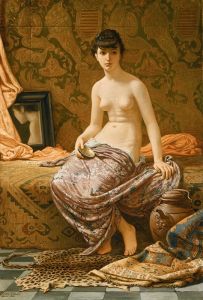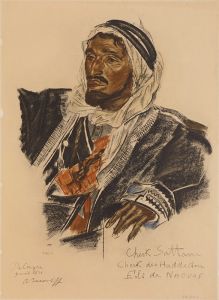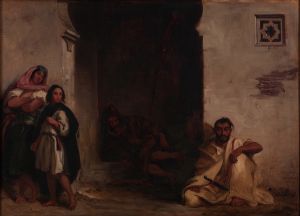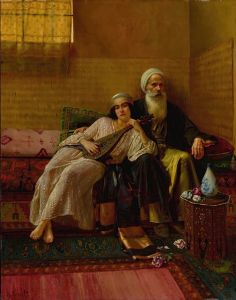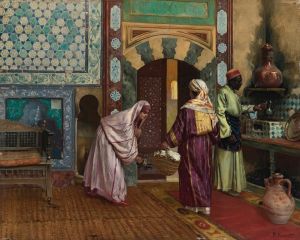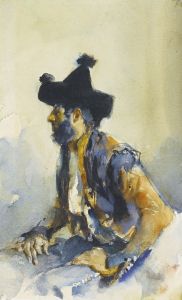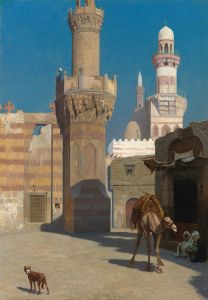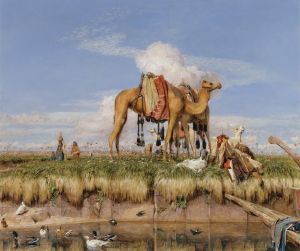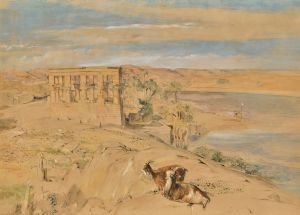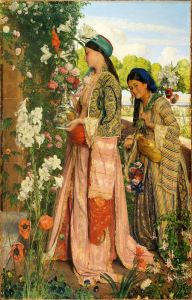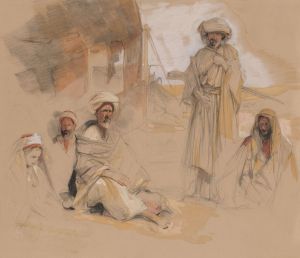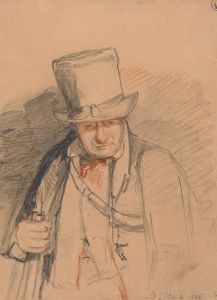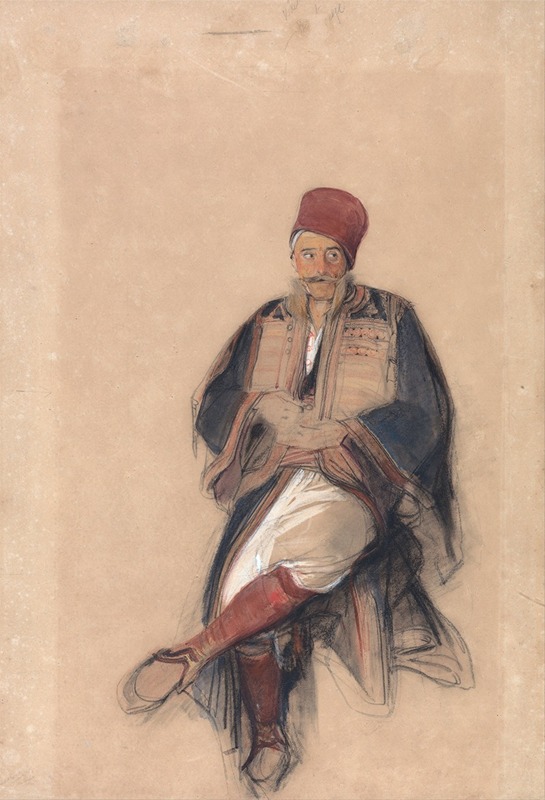
Seated Turk
A hand-painted replica of John Frederick Lewis’s masterpiece Seated Turk, meticulously crafted by professional artists to capture the true essence of the original. Each piece is created with museum-quality canvas and rare mineral pigments, carefully painted by experienced artists with delicate brushstrokes and rich, layered colors to perfectly recreate the texture of the original artwork. Unlike machine-printed reproductions, this hand-painted version brings the painting to life, infused with the artist’s emotions and skill in every stroke. Whether for personal collection or home decoration, it instantly elevates the artistic atmosphere of any space.
John Frederick Lewis was a British Orientalist painter known for his detailed and vibrant depictions of Middle Eastern life. One of his notable works is "Seated Turk," which exemplifies his meticulous attention to detail and his fascination with the cultures he encountered during his travels.
"Seated Turk" is a watercolor painting that reflects Lewis's skill in capturing the intricate textures and vibrant colors of his subjects. Although the exact date of creation is not specified, it is believed to have been painted during the mid-19th century, a period when Lewis was actively producing works inspired by his travels in the Middle East.
Lewis spent a significant amount of time in the Ottoman Empire, particularly in Egypt, from 1841 to 1851. His experiences during this period greatly influenced his artistic output. He was known for his ability to depict the daily life and customs of the people he observed, often focusing on the serene and contemplative aspects of Eastern life. This approach set him apart from many of his contemporaries, who often portrayed the Orient in a more exotic and sometimes sensationalized manner.
In "Seated Turk," Lewis presents a figure in traditional Ottoman attire, seated in a relaxed pose. The subject's clothing is rendered with exquisite detail, showcasing Lewis's mastery of watercolor techniques. The textures of the fabric, the play of light and shadow, and the subtle variations in color all contribute to the lifelike quality of the painting. Lewis's use of color is particularly noteworthy; he employs a rich palette that brings vibrancy and depth to the scene.
The composition of "Seated Turk" is both simple and elegant. The focus is entirely on the figure, with minimal background distractions, allowing viewers to appreciate the intricate details of the subject's attire and expression. This focus on the individual reflects Lewis's interest in capturing the dignity and humanity of his subjects, rather than merely presenting them as exotic curiosities.
Lewis's work, including "Seated Turk," was well-received during his lifetime and continues to be appreciated for its artistic merit and cultural insights. His paintings offer a window into the 19th-century Western perception of the East, as well as a testament to his personal engagement with the people and places he encountered.
"Seated Turk" is representative of Lewis's broader oeuvre, which includes numerous portraits and scenes of Middle Eastern life. His works are held in various collections, including the Victoria and Albert Museum and the Tate Gallery in London. Through his art, Lewis contributed to the 19th-century Orientalist movement, which sought to explore and depict the cultures of the East with a blend of curiosity, admiration, and artistic skill.
Overall, "Seated Turk" is a fine example of John Frederick Lewis's ability to combine technical precision with a deep appreciation for his subjects, making it a significant piece in the study of Orientalist art.





